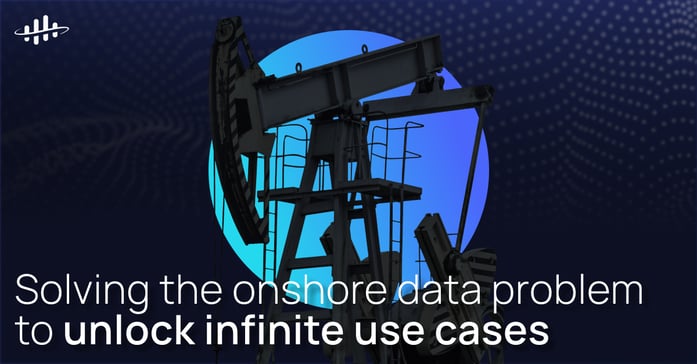
Few onshore operators have successfully scaled data-driven production optimization solutions or POCs. Of the many obstacles they face, one stands out: a lack of accessible, meaningful, and dependable industrial data. This overarching data problem is holding back transformation and preventing operators from streamlining workflows, maximizing output, minimizing costs, and maintaining a sustainable competitive advantage.
- Siloed data limits the potential of organizations to understand their past, present, and future.
- Creating new solutions is cumbersome for data and analytics teams and takes too long.
- Successful proofs of concept rarely scale to production, wasting time and money.
- Smaller, stand-alone solutions become new data silos, further complicating digitalization efforts.
- Once a solution is in production, it is hard to maintain and can become untrustworthy to its users.
By implementing Industrial DataOps principles, in combination with powerful generative AI and hybrid AI models, onshore operators can break down these silos and make data more broadly available and usable to optimize production. The value of liberated and contextualized data lies in providing trusted insights and enabling better, data-driven decision-making. With liberated data, operators can easily access relevant information from numerous sources, including equipment, sensors, production process data, and more. Once data is contextualized, it allows operators to have a better understanding of factors that negatively or positively influence production efficiency. Hence, they are able to optimize production processes, mitigate risks, automate workflows, improve safety, and enhance overall operational performance.
Beyond that, implementing Industrial DataOps and gaining simple access to complex industrial data improves collaboration across different teams and reduces time to value. It enables users, even those with no coding background, to build solutions that answer their needs at scale and at speed, whether it’s a simple equipment health monitoring tool or complex production forecasting. Solving the industrial data problem empowers operators to think beyond addressing isolated operational use cases and instead receive continuous value delivery:
Production Forecasting:
Production forecast processes are complex. Data is siloed across various well drilling and completion industry solutions such as ARIES & Actenum DSO, multiple forecasts are required across design vs. plan, and manual adjustments can cause forecast inaccuracies. Such cumbersome processes lead to a lack of trust and negatively impact business performance. Cognite Data Fusion® integrates and contextualizes sources of wells, well economics (reservoir engineering forecasts and logistics/drilling operations), and development planning data into a unified data model that serves as a single source of truth for all production data. As a result, operators can reduce the amount of time spent on consolidating and delivering production forecasts and provide accurate forecasts in near-real time to improve budgeting accuracy for better resource allocation.
Activity Planning:
Onshore operators face several challenges when attempting to accelerate and optimize onshore activity planning; gaining access to accurate and up-to-date data, aligning their diverse objectives and schedules of multiple stakeholders, the dynamic nature of onshore environments, strict regulations and permit requirements, and more. Operators need a better solution for obtaining data from systems like SAP, CMMS, data lakes, and time series historians to drive better decision-making. Cognite Data Fusion® can integrate asset data, trends, and operational metrics from numerous sources into a single, cloud-based collaboration tool to deliver AI-driven analytics, significantly reducing planning time across all assets and increasing operational efficiency and performance.
Data-Driven Health Monitoring
Operators and discipline engineers struggle to access and aggregate field data, hindering remote monitoring of pad and well health. A lack of easy access to critical equipment data causes unnecessary field trips to monitor pad/well health, delays in responding to undesired well events, longer downtime, and increased costs. Cognite Data Fusion® can leverage customer-defined logic and integrate with existing workflows and tools to track and analyze operational indicators and enable proactive maintenance actions based on the generated insights. Such a solution allows discipline engineers to monitor specific equipment health in real-time and gives operators advanced capabilities to monitor asset health, conduct real-time diagnostics, and address risks proactively to reduce downtime.
Full-Field Economic Optimization:
Operational decisions are often focused on maximizing total field production. When these decisions do not consider economic factors such as pricing or electricity costs or consider all of the midstream sales options for moving products, operators are potentially missing out on millions of dollars in revenue. Cognite Data Fusion® combines real-time operations data with financial data from midstream providers and market data plus simulation outputs into a single economic model of the field. This provides operators with detailed directions on how to flow wells and choke settings, in addition to knowing optimal midstream connection points, giving them the ability to make dynamic operational decisions based on profitability metrics instead of production metrics alone.
Undeniably, simple access to complex industrial data empowers onshore operators seeking to stay competitive in today's rapidly evolving industrial landscape. As technology advances, onshore operators must prioritize a solution that codifies industrial domain knowledge, helps industrial operations draw insights from their data, unlocks opportunities in real-time, and scales use cases effortlessly if they want to stay ahead.